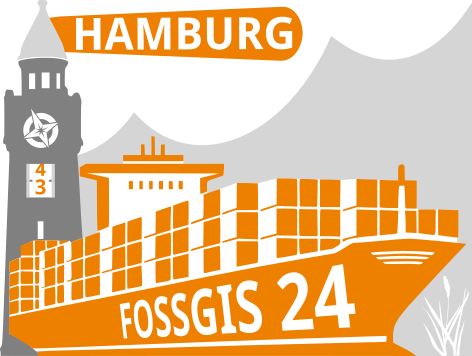The SPARQL Unicorn Ontology documentation: Exposing RDF geodata using static GeoAPIs
Florian Thiery and Timo Homburg
We introduce the ontology documentation feature of the SPARQLing Unicorn QGIS Plugin, allowing the conversion of RDF data dumps to static HTML deployments with static versions of well-known APIs such as OGC API Features. Contents of RDF data are deployed interoperably accessible for many research communities. Our talk shows the tool's motivation, conversion process with test datasets, discusses limitations, standardization issues and future developments of this approach in general.
A pertaining problem for linked open (geo-)datasets hosted on the web is the difficulty of their accessibility for people who do not have a previous knowledge about the datastructures and the software to process [RDF](https://www.w3.org/TR/rdf11-concepts/).
Often, researchers are only interested in the question if a dataset is suitable for their needs, which warrants an easy discovery of linked open data content with common tools used by the research community they are familiar with.
For example: A GIS researcher expects data to be served using e.g. [OGC API Features APIs](http://features.developer.ogc.org/) in formats such as [GeoJSON](https://datatracker.ietf.org/doc/rfc7946/) or [GML](https://www.ogc.org/standard/gml/), to be processed in tools such as [QGIS](https://www.qgis.org) to allow for an easy accessibility. The GIS researcher is not necessarily proficient in the [SPARQL query language](https://www.w3.org/TR/sparql11-query/) and in RDF-to- Geodata-conversion.
This is currently not the case for RDF data dumps, e.g. hosted on [Zenodo](https://zenodo.org) or [Github](https://github.com), since special kinds of data need to be manually extracted and converted to be of use to other communities first.
To mitigate this gap in data provision, we present the newly-developed SPARQL Unicorn ontology documentation feature, available as [QGIS plugin](10.5281/zenodo.3786814), a [standalone script](https://github.com/sparqlunicorn/sparqlunicornGoesGIS-ontdoc) and as a [Github Action](https://github.com/sparqlunicorn/sparqlunicornGoesGIS-ontdoc), which allows to create readily-hostable data dumps from RDF data, which can be served using static webspaces such as Github Pages.
RDF resources are represented by one HTML and RDF resource each, which are identified by their URI and for dereferencability, ideally hosted at this particular place on the web.
In addition to an HTML navigation and search function and a variety of graph analysis formats (e.g. [GraphML](http://graphml.graphdrawing.org), [GEXF](https://gexf.net)), the script is able to generate static API versions e.g. OGC API Features for geospatial data or the IIIF Presentation API for accessing media data.
This allows to access geodata encoded in RDF as pre-generated FeatureCollections in e.g. QGIS therefore making geospatial data in RDF directly accessible to the GIS community.
In our paper we describe the publication process of several semantically enriched and publicly available geospatial datasets in RDF and how they can be reused in QGIS as FeatureCollections and as RDF using the SPARQLing Unicorn QGIS plugin.
The [SPP Dataset](https://github.com/archaeolink/SPP1630Harbours-RDF), the [AncientPorts Dataset](https://github.com/archaeolink/AncientPorts_RDF) and the [CIGS Datatset](https://github.com/archaeolink/CIGS_RDF) highlight the representation of (spatio-)temporal research data referenced by scientific literature and serve as examples for the OGC API features integration.
In addition, we highlight the publication of [IIIF](https://iiif.io/api/presentation/3.0/) content (e.g. as complementary data to geodata) using the example of [ARS-LOD](https://github.com/RGZM/ars-lod/).
Finally, we discuss further extensions of the plugin for other statically generated content, limitations of the current approach and highlight the importance of this way of publishing for the general public and in a research software engineering setup.
